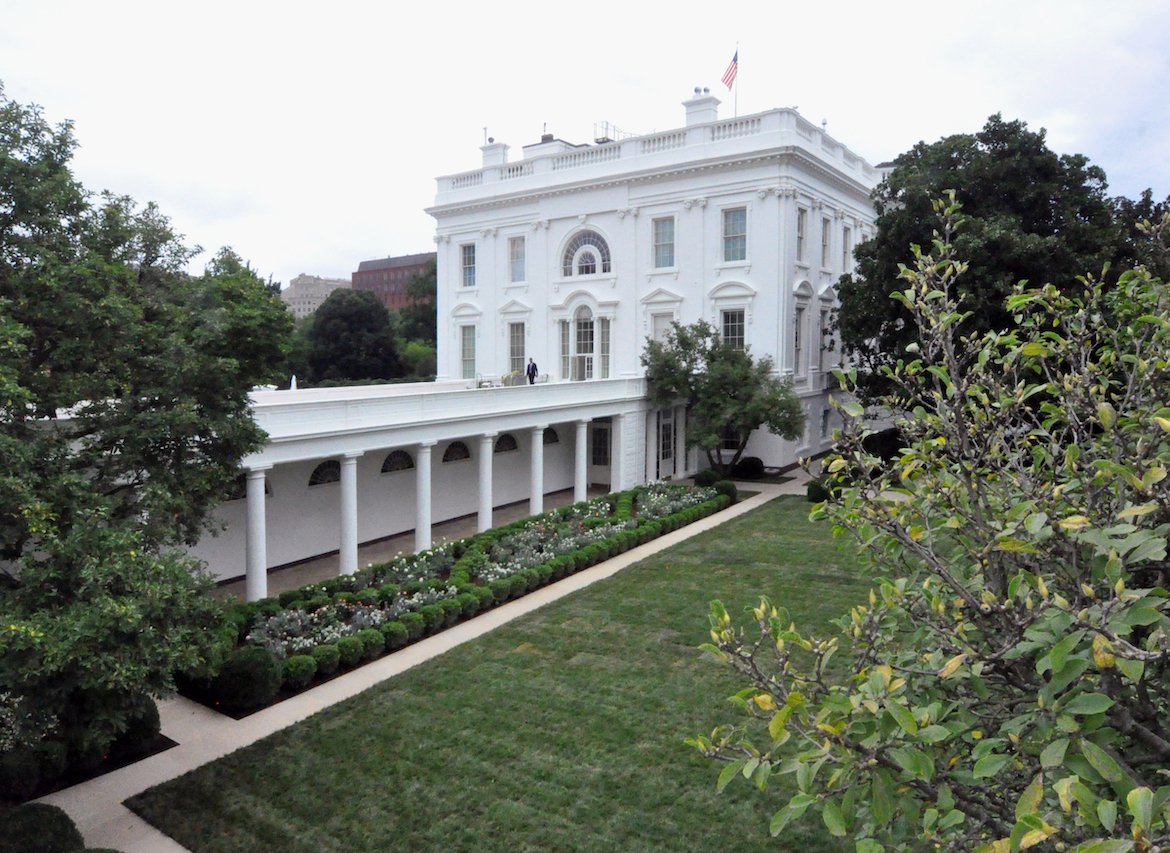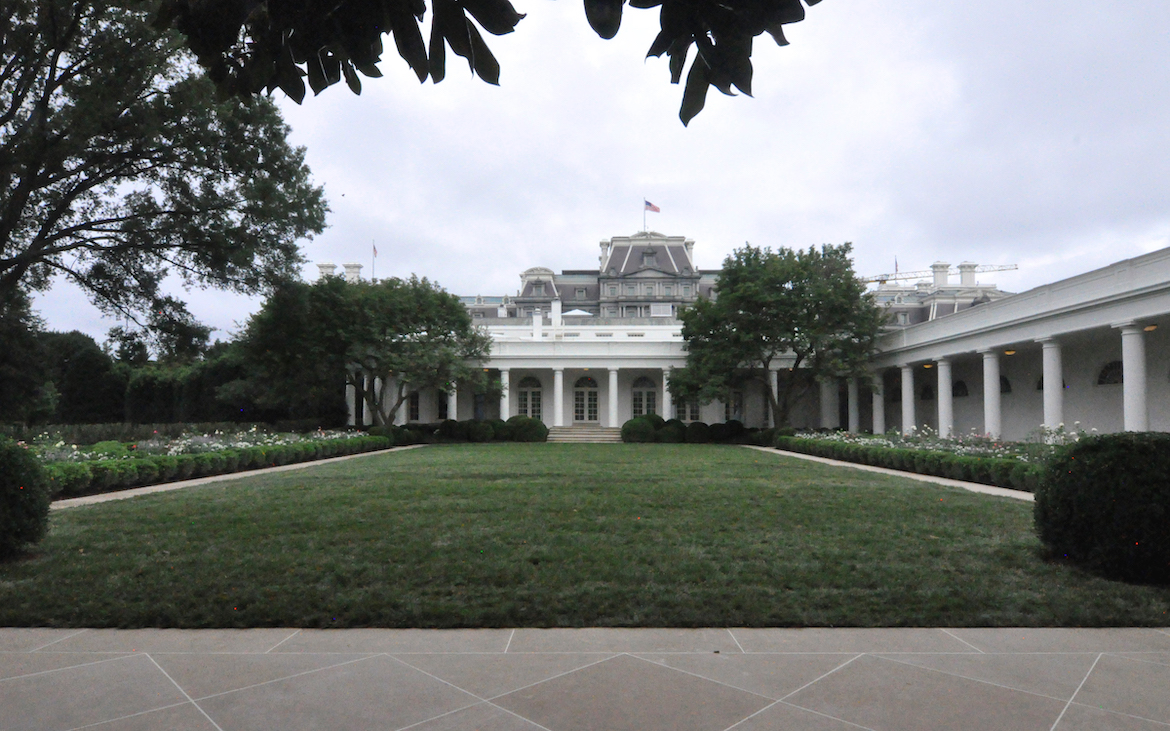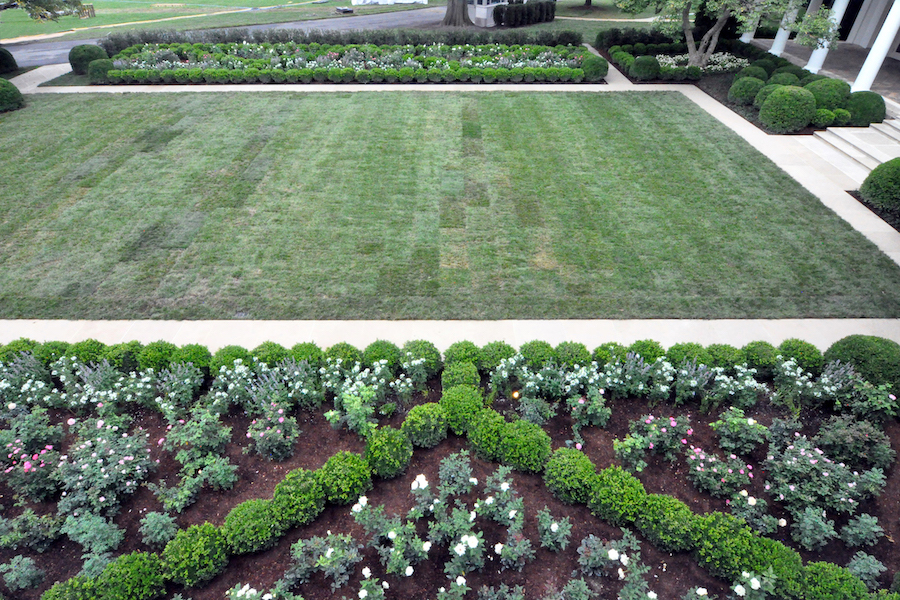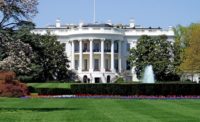On an overcast morning this past weekend, the White House Rose Garden reopened. Heralded in a release as an infusion of First Lady Melania Trump’s aesthetic, the most notable change is that a once inward-facing, contemplative space now opens to broader vistas beyond. Gone are the flowering “Katherine” crab apple and holly bushes that once lined the colonnade connecting the residence to the West Wing. A new limestone pathway rings the central lawn, leading to a terrace opposite the Kennedy steps.
What we now know as the Rose Garden began as an ornamental flowerbed designed by Frederick Law Olmsted, Jr., in 1902, beside the White House’s south portico. In 1913, First Lady Ellen Wilson planted roses in what was then known as the West Garden of the White House. Infrequently used for official events, this small part of the grounds became a symbolic focal point after First Lady Jacqueline Bouvier Kennedy enlisted Rachel “Bunny” Lambert Mellon to transform it to a more ceremonial function in 1962; Kennedy’s televised White House tours showcased the Rose Garden to a global audience.
Much of the work done on the garden had just been completed prior to the opening, and landscapes take a significant amount of time to grow in. A surprising amount of underground infrastructural improvement around drainage and lighting was also installed. What is readily apparent, however, is the strict planting pattern that references Mellon’s boxwood parterre design, which is further echoed in the diamonds of limestone pavers that line a new accessible pathway at the eastern edge of the garden. The new design aims to create a layered view, from the Kennedy Steps—just outside the Oval Office—to this regimented garden, then to the South Lawn, and to the Ellipse and National Mall beyond. In short, the garden, not yet fully mature, recedes quickly from view; a staffer remarked that the White House architecture is the real showstopper.








Post a comment to this article
Report Abusive Comment